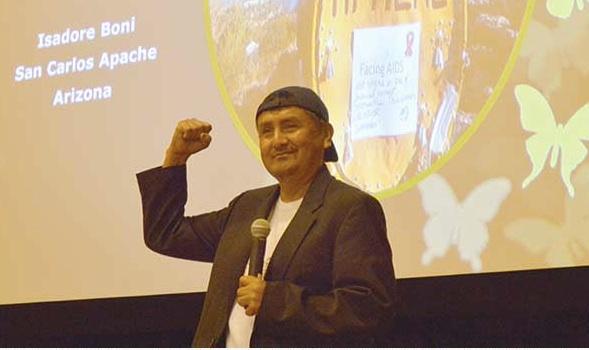According to the Center for Disease Control (CDC), of persons diagnosed with HIV, more than 38 percent of American Indians and Alaskan Natives progressed to an AIDS diagnosis in less than 12 months, which is the highest percentage among all racial/ethnic groups.
Many question why American Indians and Alaskan Natives progress so fast to an AIDS diagnosis, which also contributes to Natives having the shortest survival time among all racial/ethnic groups. AIDS/HIV awareness activist Isadore Boni blames the stigma attached to the disease.
“Stigma in Indian country in general is still very very strong,” Boni said. “Stigma prevents people from getting tested, prevents people from accessing the care they need and it stops people who are positive from going through the process of acceptance. That is more important than anything. Stigma to me in my opinion, is the reason, that Native people, have the highest death rates, among all other people according to the CDC.”
Boni, a San Carlos Apache tribal member, spoke to college students at Haskell Indian Nations University for their AIDS Awareness event.
RELATED: Victory at Last: Apache Activist Helps Pass HIV/AIDS Confidentiality Resolution
Native AIDS Survivor Finds Empowerment Through Honesty, Fights for HIV Confidentiality Law
Apache AIDS Survivor Runs Fifth Half-Marathon
Regardless of the statistics, Boni has gone on to lead a healthy and productive life. Since being diagnosed with HIV, he recently finished his fifth P.F. Chang’s half marathon this past January in Phoenix, Arizona, where he resides.
“I want the students to know, even the most educated and most successful people have HIV and it doesn’t necessarily mean it’s a death sentence,” he said. “The sooner you get tested, the longer you can live.”
According the CDC, Native Hawaiians/Other Pacific Islanders and American Indians/Alaska Natives had the 3rd and 5th highest rate of new HIV infections, respectively.
One concern of Boni is making sure when someone does find out they are positive for HIV that they have support.
“Sharing with people makes me stronger,” Boni said. “It is also medicine, whether it’s words or a hug, that to me is medicine. That support, is more stronger than any medication that I have been taking.”
The National Native HIV/AIDS Awareness Day is March 20. Organizers are looking for tribal communities to host events to help increase awareness. Anything from hosting talks, walks, runs or by going with someone to take a test as a form of support, National Native HIV/AIDS Awareness Day has materials ready for anyone at their website at www.nnhaad.org.
This article was originally published by Wellbound Storytellers. Read more blogs about healthy living written by Natives throughout Indian country at WellboundStorytellers.com.
Read more at http://indiancountrytodaymedianetwork.com/2014/03/17/isadore-boni-aids-stigma-holding-back-progress-indian-country-154043

